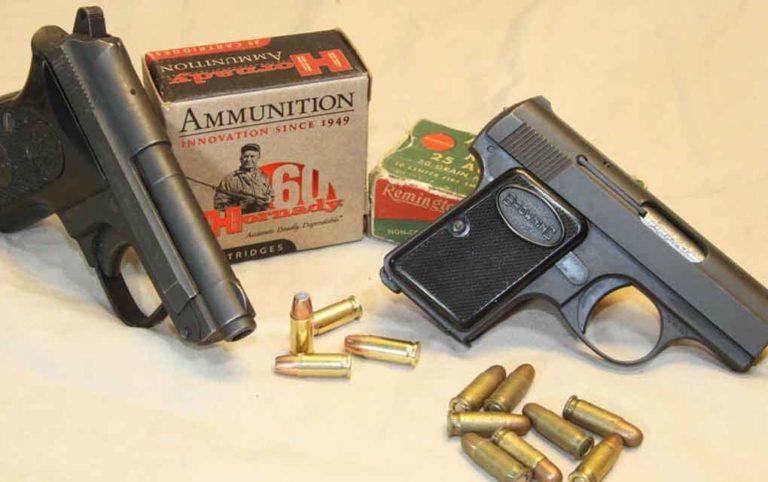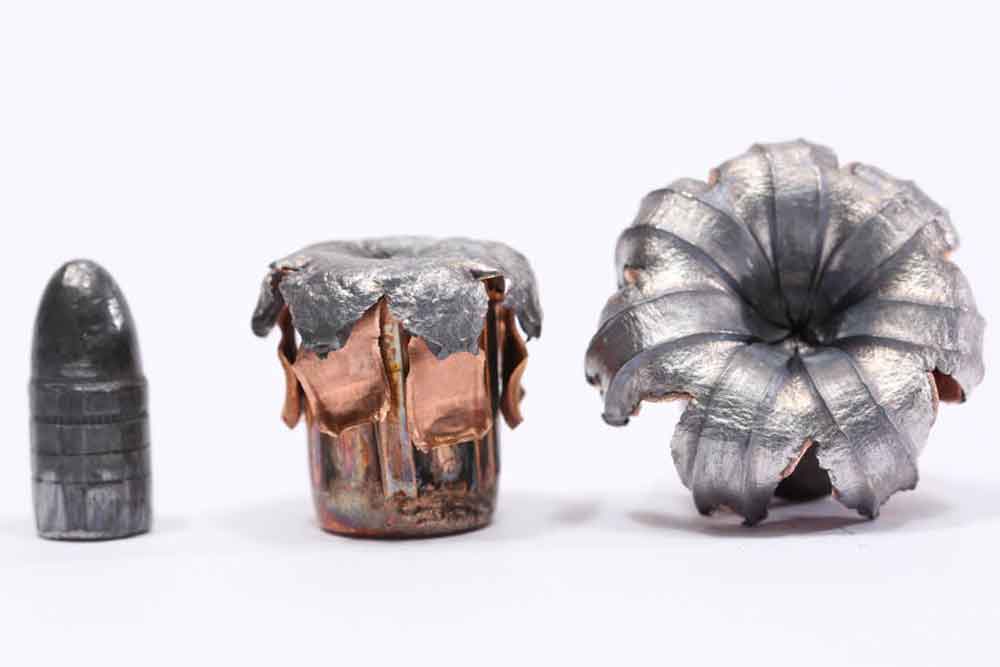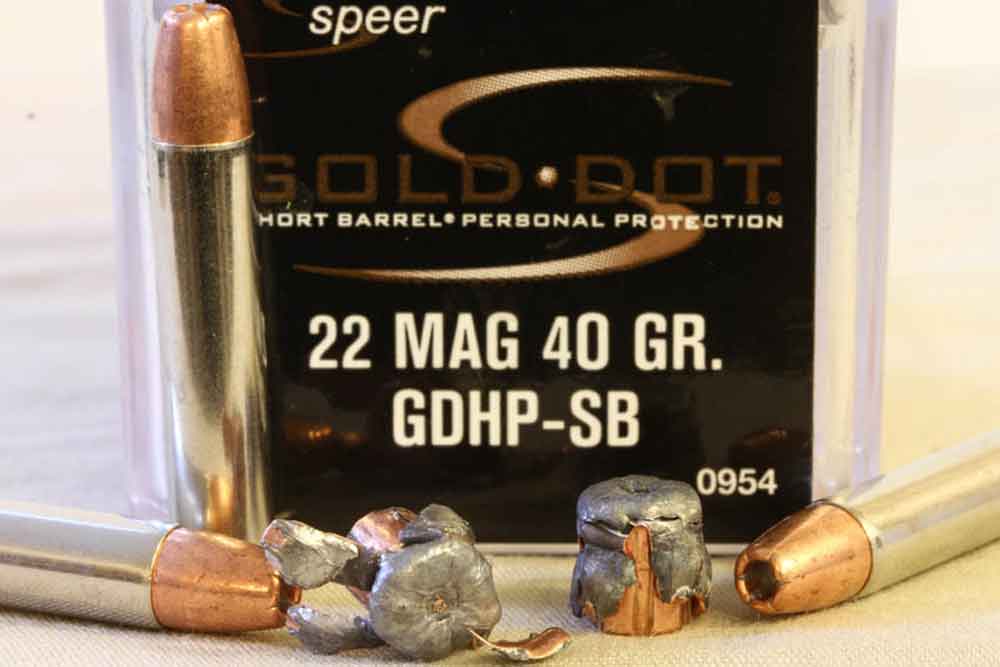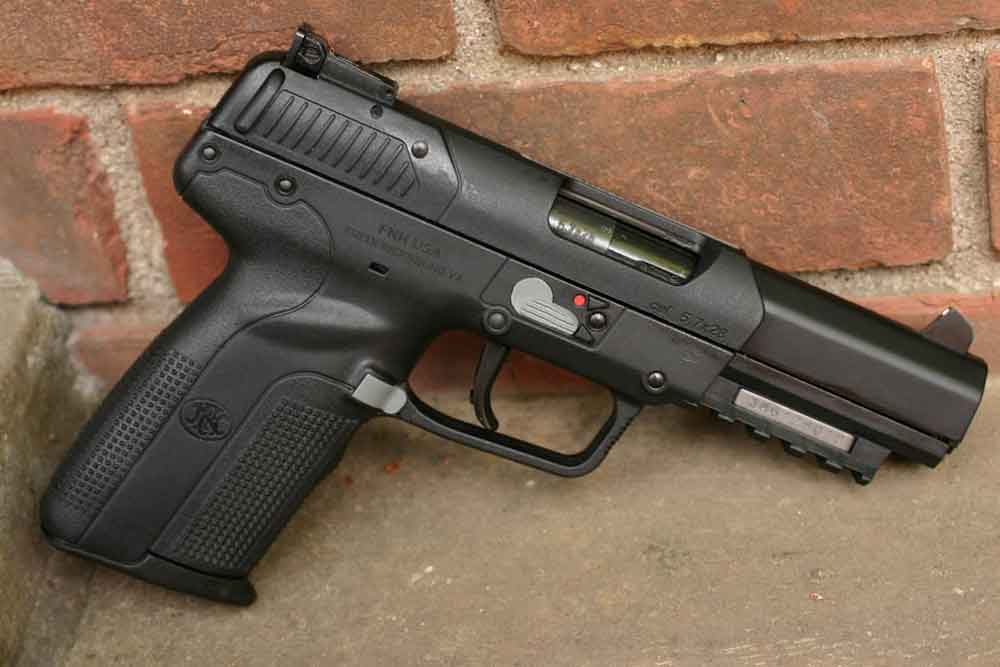
Concealed carry of small handguns, a.k.a. micro guns or pocket pistols, is controversial. But sometimes it makes sense for self-defense, if you know how to make the most of it.
What are the micro guns and how do they stack up?
The subject of a .22, .22 magnum or .25 Auto for defense is controversial. They are not stoppers, period, end of story. However, these so-called “micro guns” are still lethal weapons. The reason they exist is twofold: compactness and low recoil. The smallest handgun to be had is an ultra-compact .22LR, or a .25 Auto. The lowest-recoiling handgun you can shoot is a standard-sized .22 pistol, like one of the smaller-sized Ruger Mk I, II, III or IV.
The .25 ACP/auto is not much different from the .22LR, with the exception that the bullet, almost always a full metal jacket, can be counted on to feed more reliably than the lead-bullet .22LR. But, that can also be a matter of maintenance (a lint-choked pistol isn’t going to feed anything reliably) and handling.
.25 ACP
I will just pass right over the .25. Despite the compactness of some of the pistols that use it, it offers nothing the .22LR doesn’t, ballistically, and does so at greater cost, less availability, and fewer options for pistol choices.

.22LR
The standard .22LR offers only a straight, bullet-diameter permanent wound, with a depth of 14-15 inches. There may be some expansion with hollowpoint bullets, but that comes at the expense of a couple of inches of penetration. Also, some bullets may yaw and end up stopping base-first in the wound track. When traveling sideways, it does create a marginally larger permanent wound than a simple cylinder, but hardly something to boast about.
The .22LR is not a big stick when it comes to defense, but it is better than a knife or a club, especially for someone who can’t handle heavier recoil.
The trick to its use in defense is to realize two points. First, you will have to depend on more than one shot. In fact, the standard response when shooting in defense with a .22LR should be to empty the magazine and immediately reload. Second, placement matters. The hits have to be high center of mass or else the effort is wasted.
This combination of needs does not make the .22LR a high-percentage option, even in the handgun realm. But, for those with no other choice, there is no other choice.

.22 Magnum
Stepping up, you have the .22 Magnum, which is a longer case than the .22LR and designed to contain the bullet inside the case. The jacketed bullet offers the promise of expansion, but not always the realization. You see, a .22 Magnum out of a rifle generates plenty of velocity. Out of a handgun, it is often no faster (or not enough faster to matter) than a .22LR.
The expansion of any of these bullets is not a reliable outcome. Even if they do expand, the degree is not great. An expanding .22LR, all 40 grains of it, could bump up to .27-inch in diameter.
Hornady has lead the way here, offering a defensive-use .22 Magnum loading, with a bullet designed to expand at velocities the .22 Magnum can deliver. Called their Critical Defense, it gives 9-10 inches of penetration in ballistic gelatin out of a handgun.

Speer also makes its Gold Dot line of ammunition in the .22 Magnum. If you want as much performance as you can get, in a pistol that isn’t going to kick much, then the .22 Magnum can be a good choice.
Combined with a handgun such as the Kel-Tec PMR-30, someone who can’t handle a larger caliber can reasonably expect a good outcome. Part of that is the improved performance of the .22 Magnum over the .22LR, and the other is capacity. A standard .22LR pistol has a 10-round magazine. The PMR-30 magazine holds 30 rounds.
Nine to 10 inches isn’t FBI-passing performance, but it also doesn’t offer anything like the recoil of an FBI-compliant load. This is part of the compromise with using so-called “micro guns.”
5.7X28 FN
The outlier here is the FN 5.7×28 cartridge. This centerfire cartridge uses a jacketed bullet, longer than a .22LR or .22 Magnum. Out of the firearms for which it was intended it works reasonably well. That is, out of an SMG-sized firearm like the P90, with a 10.4-inch barrel, it can generate enough velocity to work. The PS90, with its 16.1-inch barrel, really delivers the goods, but that isn’t a handgun. Put into a handgun, it comes in a bit ahead of the .22 Magnum in velocity.
There is not a lot of data for the 5.7. It has been adopted by some law enforcement agencies, and has been used in shootings by them. Getting information out of those sources is difficult. The only one we have that offers a reasonable data set is the shooting at Fort Hood. There, Major Nidal Hasan fatally shot 13 people and wounded 32 more. He used an FN FiveseveN pistol and two ammo types: the FN SS192 and SS197SR. The SS192 is (or was, FN stopped making it in 2004) a jacketed hollowpoint with an aluminum core. Not much expansion, and not armor-piercing. The SS197SR is loaded with the Hornady V-max bullet, using a blue polymer tip to indicate a slightly higher velocity than the SS196SR.

The ability of the rounds to stop fights was out of proportion from what one would expect with such a small cartridge. Three of the victims valiantly charged the shooter, attempting to stop him. They were shot for their efforts, were stopped and subsequently died. They charged from close range (the incident happened indoors, so there were not long distances to cover) and yet failed to close the distance due to the gunshot received.
Those wounded with hits to the extremities were unable, in many instances, to flee or fight, due to broken bones. When a “mere” .22 handgun cartridge can break a femur, there’s something going on that must be explained. That shot was received by one of the first responders, an in-base civilian security person. She took a hit to her wrist which made that arm unable to function, and a hit to the upper leg that broke her femur.

The drawback to the FiveseveN approach to low-recoil defense is cost. A FiveseveN lists for around $1,180, compared to the Kel-Tec PMR-30 at $455. The FN pistol holds 20 rounds (optional extensions make it a 30-round magazine) compared to the Kel-Tec at 30 rounds standard. An FN magazine is $35, with the extension costing another $18-20, while the Kel-Tec is $31.
5.7×28 ammunition costs (at the moment) $28 per box of 50 rounds, while .22 Magnum can be had for as little as $10 per box of 50 practice FMJs, up to $15 for a box of Hornady Critical Defense.
The last hurdle for the 5.7 is size. The grip is a bit larger than that of the Kel-Tec, and even if the recoil is mild, if you (or the person you are coaching in this situation) can’t get a hand or hands around it, it isn’t a good choice.
Recommendations
If you already have a .22 pistol and need it for defense, then use the most accurate, readily available .22LR ammunition to be found. Practice getting as many hits out of a full magazine, on a playing-card-sized target at 7 yards, as quickly as you can. Volume and accuracy need to be your focus here.
A better choice would be either Hornady Critical Defense or Speer Gold Dot in .22 Magnum in the Kel-Tec. The PMR-30 isn’t going to cost much, if anything, more than a good .22LR pistol. Use whichever of these two loads shoots reliably and accurately out of your Kel-Tec. As with the .22LR, practice hitting a playing card at 7 yards, as quickly as possible, and train yourself to keep shooting on the target until it (he, she, they) goes down.
If you have the hands and the budget, but not the recoil resistance, for something bigger in caliber, then go for the FN FiveseveN in 5.7×28, the 40-grain FMJ. The V-Max is accurate, but is designed as a varmint-level bullet. I’d be much more confident with an FMJ in this situation, than with a readily expanding bullet of only 40 grains.
While the effect is likely to be better than the .22LR or the .22 Magnum, the process should be the same: playing card accuracy, 7 yards, continuous fire until the bad guy goes down.
Caveats
There will be those who want to throw me under the bus for recommending the various .22s for defense. I have attempted to be clear: rimfire “micro guns” are better than anything not a firearm; and for those who cannot handle more recoil, these are perhaps the only choice. I would rather someone who needs a firearm for defense have a weak one than none at all, as long as they realize the limitations of the tool they are using.
There are no .25s I can recommend. For the cost, you can easily acquire .22LR or .22 Magnum ammo that will perform better. And since you have to depend on volume and speed of fire, the ultra-compact .25 “micro guns” are poor choices, as clever as some of the designs might be.
Editor's Notes: This article is an excerpt from Choosing Handgun Ammo: The Facts That Matter Most for Self-Defense by Patrick Sweeney.

Next Step: Get your FREE Printable Target Pack
Enhance your shooting precision with our 62 MOA Targets, perfect for rifles and handguns. Crafted in collaboration with Storm Tactical for accuracy and versatility.
Subscribe to the Gun Digest email newsletter and get your downloadable target pack sent straight to your inbox. Stay updated with the latest firearms info in the industry.

![Best Concealed Carry Guns In 2025 [Field Tested] Wilson Combat EDC X9S 1](https://gundigest.com/wp-content/uploads/Wilson-Combat-EDC-X9S-1-324x160.jpg)


![Best 9mm Carbine: Affordable PCCs [Tested] Ruger Carbine Shooting](https://gundigest.com/wp-content/uploads/Ruger-Carbine-Shooting-100x70.jpg)
![Best AR-15: Top Options Available Today [Field Tested] Harrington and Richardson PSA XM177E2 feature](https://gundigest.com/wp-content/uploads/Harrington-and-Richardson-PSA-XM177E2-feature-100x70.jpg)
